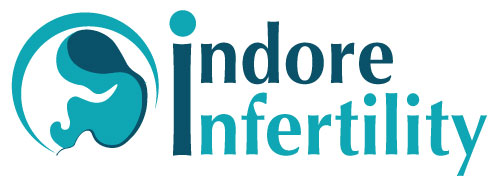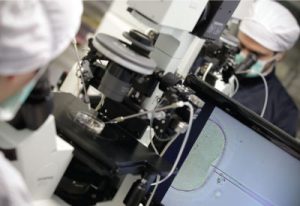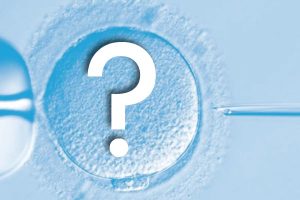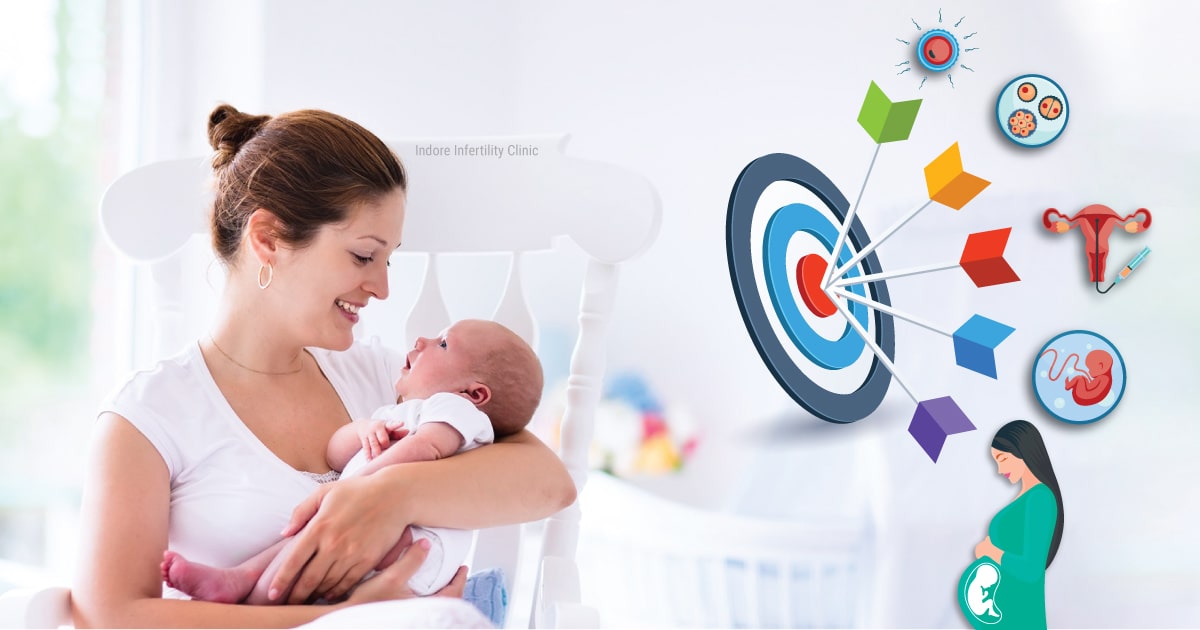
IVF Success Rate – What is the success rate of IVF Treatment?
Patients often want to know: ‘What is my success rate if I undergo IVF Treatment?’
And what doctor’s usually tell you is that “IVF Success Rate is close to 60 to 70% per IVF Cycle ”.
But it still doesn’t answer your question as you do not know if you will be amongst the 30 who did not conceive or 70 who did.
Also, it does not clearly state the most obvious question, which is “What are your chances of having a live healthy baby at the end of your IVF Cycle ?”
There is a huge bridge between what a patient expects to know and what the doctor can tell you for sure. Hope we try to clear some of the doubts through this blog.
Defining IVF Success Rates
An IVF Cycle should be considered successful if it results in a successful pregnancy leading to a healthy child birth. Hence IVF success rate should actually be measured in terms of Live Birth Rate. However globally IVF success rate is usually quoted in terms of successful pregnancy after an Embryo Transfer.
Do you want to know why?
Statistically, the Global average of Take Home Baby Rate for patients trying an IVF ICSI Cycle with their own gametes (Self eggs and sperms) is about 40%
Humans have a tendency to stick to numbers, so yes 40% does sound a bit disheartening, hence it might be a huge blow to many patients who are already in a very pessimistic state of mind. But if numbers are all that matters, then have a look at the following:
Comparing IVF success rates with Natural spontaneous conception
Before we look into some statistics, let us brush up some IVF Terminologies for easy and quick reference.
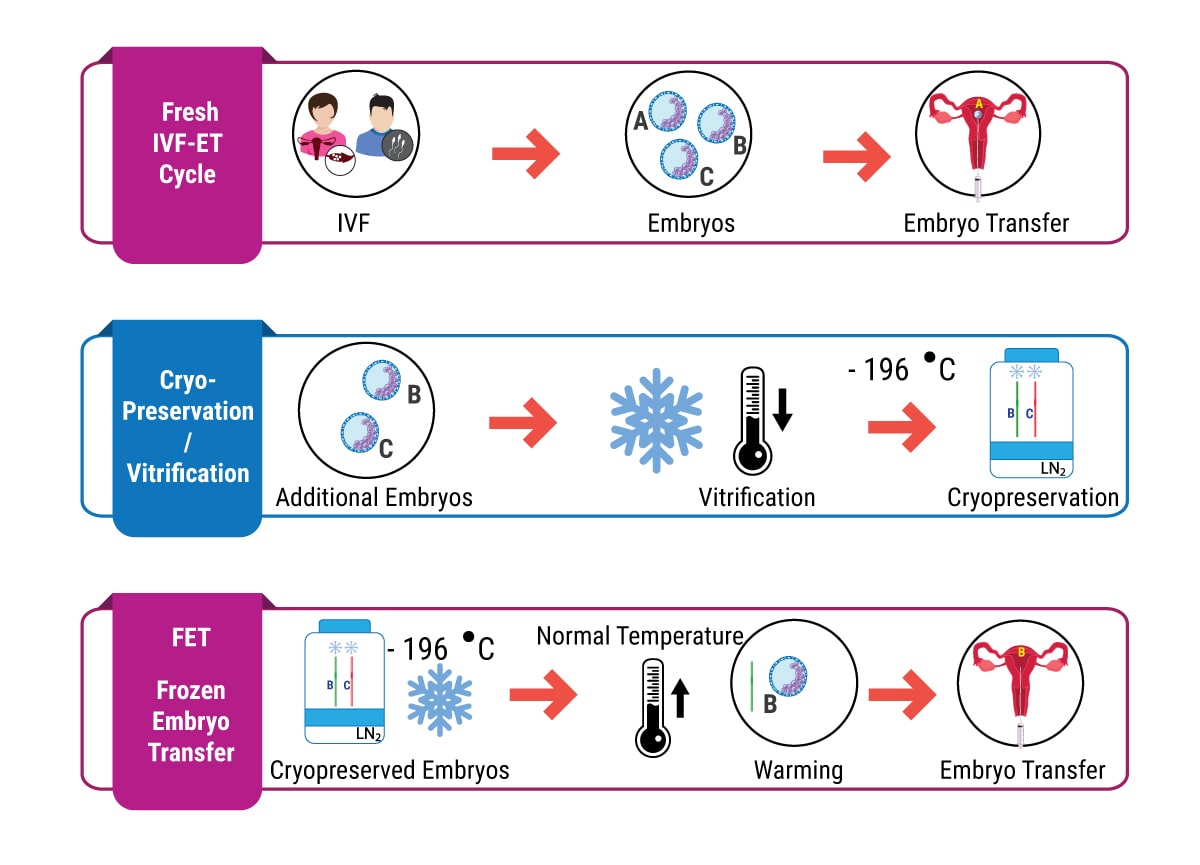
For any normal fertile couple, the chances of spontaneous conception is approximately 10 to 12 % per month. While for IVF Treatment, the chances of conception per IVF Cycle is approximately 30% for a Fresh IVF – ET and close to 65% for a FET Cycle. So IVF is a winner on this parameter.
In spontaneous or natural pregnancies, the chances of miscarriage during first trimester is around 5 to 7% which is same as that of conception achieved by IVF / ICSI treatment. In natural pregnancies, the chances of a live birth is about 90% which again is the same as that of IVF.
Since, the chances of miscarriage and live birth for both natural pregnancy as well as IVF pregnancies are similar, it becomes logical to only compare the conception rate when we talk about IVF success rate. Also in both types of pregnancies the only difference is how conception is achieved, hence it is a global trend to measure success rate of IVF – ICSI treatment only in terms of pregnancy / conception rate per Embryo transfer.
What is Cumulative Pregnancy Rate ?
Another buzz word? Like we discussed above, the chances of conception using IVF ICSI treatment per cycle ranges from 30% to 65% depending upon the timing of Embryo transfer with respect to egg or oocyte retrieval.
A Cumulative (or accumulated) success rate is calculated after adding up success rates of individual attempts of Embryo Transfer.
Let us elaborate with a diagrammatic representation:
Protocol 1: One IVF / ICSI Cycle, with one Fresh Embryo Transfer i.e. Embryo transfer after 3 to 5 days of Ovum pickup, followed by one Frozen Embryo Transfer in case of a unsuccessful first attempt of Embryo Transfer.
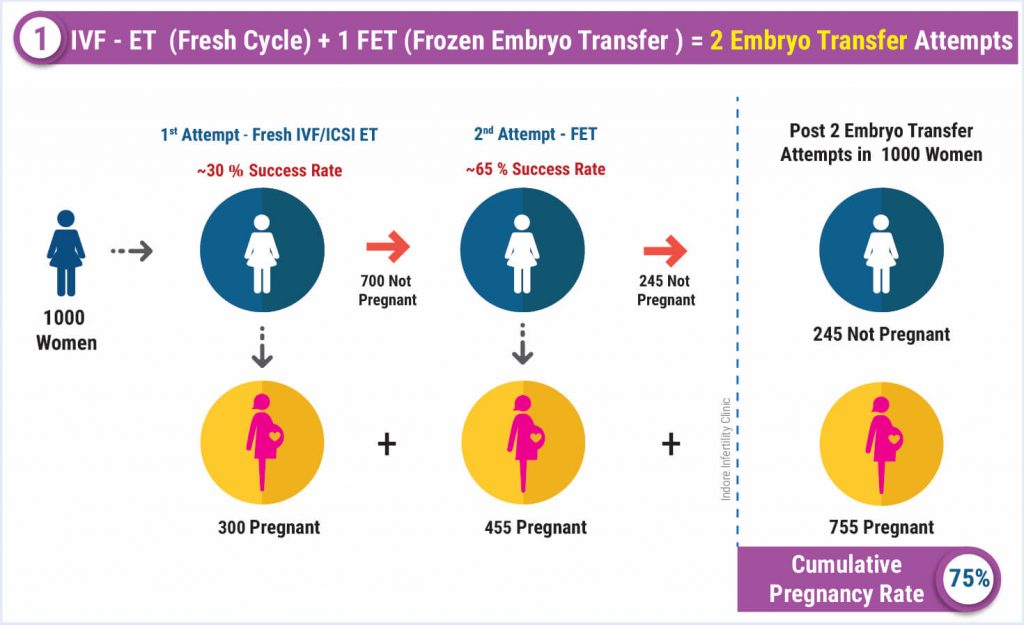
As shown above, if 1000 women underwent an IVF ICSI Cycle and chose to undergo one Embryo Transfer in the same IVF Cycle (Called Fresh IVF – ET Cycle), she would stand a 30% chance of conception in that cycle.
Meaning 300 out of 1000 women would conceive while 700 will need further treatment.
These 700 women, when they undergo additional Frozen Embryo Transfer (FET) Cycle, with a success rate of 65% on a conservative side, 455 out of 700 women will conceive while 245 will need further treatment
Protocol 2: 1 IVF / ICSI Cycle with both Frozen Embryo Transfers (FET)s
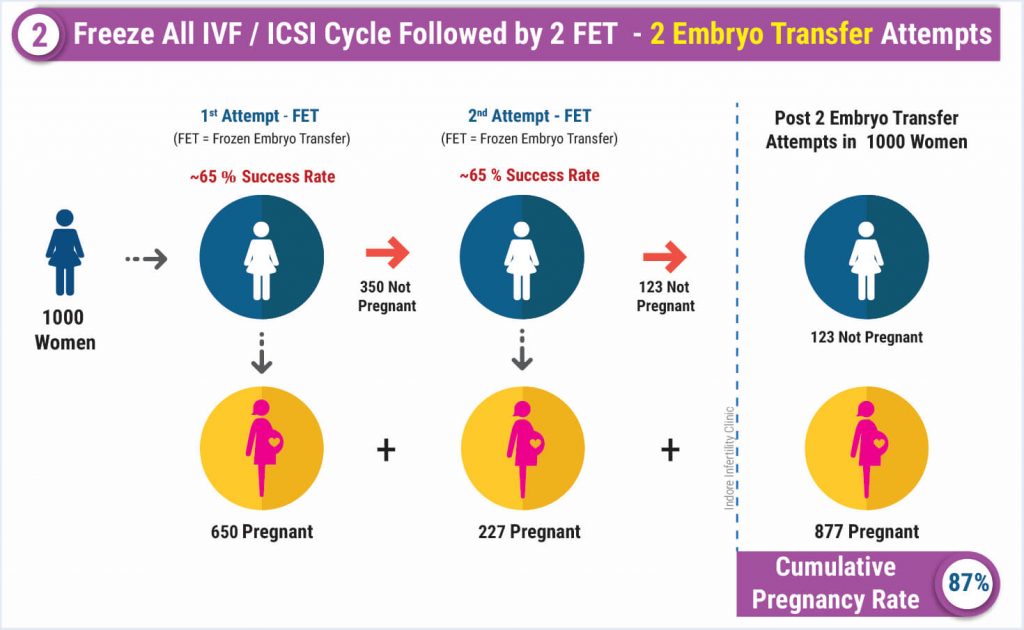
This is another variant of an IVF Protocol (Freeze All Protocol) used these days, wherein instead of transferring Embryos in a fresh IVF ICSI cycle, all the embryos are frozen for subsequent Frozen Embryo Transfer (FET) Cycle.
As shown, of 1000 women undergoing IVF ICSI Cycle with Freeze All protocol, the first attempt to an Embryo transfer in FET cycle with a conservative success rate of 65% would result in 650 women getting pregnant. About 350 women who do not conceive in the first cycle, will need further treatment.
These 350 women, when they undergo additional Frozen Embryo Transfer (FET) Cycle, with a 65% success rate, 227 will get pregnant leaving behind 123 women who would need additional treatment.
Hence the cumulative success rate of IVF ICSI Freeze All protocol with two Embryo Transfers, becomes (650 + 227 = 877 pregnancies) 87% in this case.
It is worth noting that success rate of IVF Treatment with Three Embryo Transfer attempts is as high as 97%
What are the factors affecting the success rate of IVF Treatment?
There are many factors that affect the success rate of an IVF Cycle, following are a few most important factors that directly impact your results:
- Age of both partners, especially female partner
- Weight and BMI
- Ovarian Reserve and response to ovarian stimulation
- Quality and quantity of Sperms
- Genetic makeup of the resultant Embryo
- Quality of Uterine Cavity
- Endometrial Receptivity
- Embryo Culture System of IVF Lab
- Embryo Transfer Procedure
- Luteal Phase Support
When an IVF Cycle fails, it’s important to analyze the reason for failure and point out the possible factors that could have impacted the result. If possible eliminate the factor in question and attempt again.
e.g In case of poor ovarian reserve due to advance maternal age and poor response to ovarian stimulation, Donor oocytes program can be opted, this will result in eliminating the oocyte factor and usually gives a huge boost to the expected pregnancy rate.
Hence it is very important to analyze the reason behind a failed IVF Cycle with your clinician before attempting another cycle. Please read our blog on how to deal with IVF Failure.
How can I increase my chances of conception by IVF Treatment?
As a patient, the only things that seems to be in your hand is your gametes. Try and maintain a healthy lifestyle and a healthy body weight in order to ensure good quality of gametes. Unfortunately the impact of age on your ovarian reserves cannot be reversed, hence try and seek help of Infertility or IVF Specialist early.
Modern medicine has given a few advancements like Blastocyst Culture, PRP Therapy and PGT that can increase your chances of conception in an IVF Cycle.
Concluding Remarks
A series of orchestrated steps, occurring over a few days, performed by specialized doctors, trained embryologists and nurses, happening in and out of human body. A lot of science, some known and some unknown, a lot of patience, perseverance and ample of prayers giving an end result, that is nothing short of a MIRACLE. This is what In Vitro Fertilization is all about.
So much of it is known, and yet so much remains unknown.
Unfortunately we do not know enough to achieve 100% success in IVF Cycles.
But fortunately we know enough to help you achieve parenthood dream 90% of the times.
